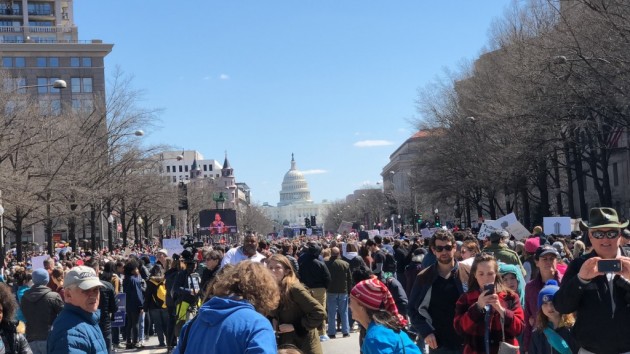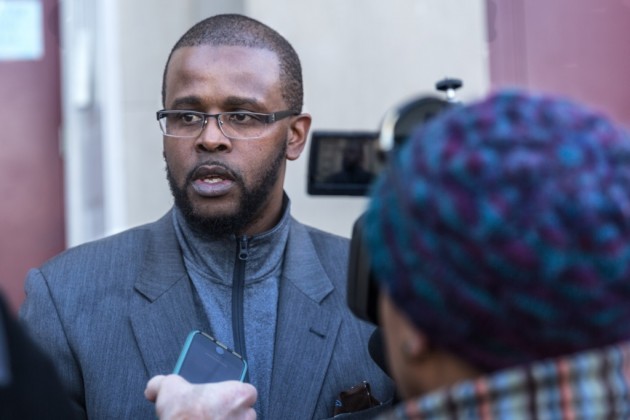Sursum Corda Residents Skeptical, Worry About Losing Homes
Once a home to nuns but now overridden with violence and drugs, the Sursum Corda neighborhood in Northwest Washington, D.C., will get a facelift in hopes of bringing some of its tranquility from the 1960s back to the community.
The low-income Sursum Corda cooperative will be torn down to make way for mixed income housing, retail and office space. Part of a $700 million project to revitalize the area, the new development hopes to attract mid- and upper-income individuals and families without displacing the current residents.
Mayor Adrian Fenty announced last week that a development partnership called One Vision would bring the project to fruition. Deemed Northwest One, the development will include 40,000 square feet for retail space; 220,000 square feet for office space; 1,630 housing units comprised of high-rise apartments, low-rise apartments, condos and townhouses; and a health clinic which will serve as a new 21,000 square foot facility for Unity Health Clinic. Two District developers – William C. Smith & Co. and the Jair Lynch Cos. – will lead the development partnership, which also includes Banneker Ventures and Community Preservation Development.
Northwest One will not only affect Sursum Corda, but also the Temple Courts housing complex as well as several other buildings as it will encompass an area bounded by North Capitol Street, New York Avenue, New Jersey Avenue and K Street. The first phase along North Capitol Street is expected to see the start of construction in late 2008 or early 2009.
Developers faced much opposition from Sursum Corda residents, who include hundreds of senior citizens and single mothers who live on less than $15,000 a year. The Department of Housing and Urban Development provides Section 8 housing in the neighborhood, allowing residents to pay only one-third of their income on their apartment while HUD covers the remaining balance. Residents worry that the low-income housing they are dependent on will be sacrificed to make room for luxury apartments and condos, especially with Sursum Corda’s location offering views of the Washington Monument and Capitol.
The project has been a long awaited step of the city’s New Communities initiative, which aims to improve the quality of life for families in high-risk neighborhoods through redevelopment that promotes mixed-income communities while protecting housing for the poor. Despite its intentions, some are skeptical of the initiative and fear it may just be another form of urban renewal and gentrification that has pushed many longtime residents out of the city in search of more affordable dwellings.
One elderly resident in her 70s who wished not to be named recalled the 1950s when urban renewal caused the demolition of many buildings in the area, displacing many. She explained that after much protest and action from church organizations, the government agreed to fund the construction of Sursum Corda. The 233-unit complex was named after a Latin phrase meaning, “Lift up your hearts,” she said.
Sursum Corda came about thanks to a group of Catholic activists from Gonzaga College High School and the parish of St. Aloysius who participated in a HUD loan program in order to build housing for families displaced during the urban renewal. It became one of the nation’s first federally subsidized housing complexes.
Construction began in 1967 on what was originally 155 resident-owned townhouses and 44 rentals. The neighborhood was different from other public housing complexes in that it was closed off and arranged around a horseshoe-shaped street to promote a sense of community, according to the D.C. Housing Authority.
The neighborhood was once tranquil and catered to family values as a group of nuns from the Order of the Religious of the Sacred Heart were among its first residents. Georgetown University students would come to the neighborhood to tutor children through a program started by Father Horace McKenna, a Jesuit priest at St. Aloysius Church at Gonzaga College High School. The program continues today, but the neighborhood is a much different, more dangerous place.
Crack cocaine hit the neighborhood hard in the 1980s. The neighborhood’s layout meant to help the community with its dead-end streets and enclosed courtyards led to an ideal breeding ground for drug activity, street gangs and violence as it made patrolling the area difficult for law enforcement. As the area was overtaken by poverty and crime, the positive elements in the community disappeared even driving the nuns away with the last moving out in the early 1990s.
Despite all of the crime, Sursum Corda was able to stay out of the headlines until a 14-year-old girl was killed execution style on Jan. 21, 2004. Franklin Thompson, then 22, was charged with first-degree murder in the killing of Jahkema “Princess” Hansen. Police officials said Thompson, who went by the name “Frank Nitti,” killed the girl because he believed she witnessed one of two shootings days before. The girl had been questioned by police and offered protection, but told them that she had not seen anything.
The area was designated an increased enforcement zone for drug trafficking and prostitution by D.C. Metropolitan Police after Hansen’s death. Former Mayor Anthony Williams deemed it one of the District’s 14 crime hot spots. Since then, community leaders say the crime rate has been on the decline. Police official estimates say that crime went down by 40 percent in the area within a year of Hansen’s death thanks to increased enforcement efforts.
Though improved, crime still has a stronghold on the neighborhood. “Sursum Corda has been beefing with Barry Farms [a housing project in Southeast Washington, D.C.] for years,” Jesmond Posey, a 21-year-old familiar with the area, said. “A lot of stuff still goes down in Sursum Corda despite the police.”
Trouble continued for Sursum Corda residents as HUD, which owned the mortgages on the public housing units, foreclosed on Sursum Corda. Residents were granted a brief reprieve when residential developer KSI Services offered to redevelop the property. Residents were to be awarded $80,000 per household and half of the profits from homes built for more affluent buyers as well as guaranteed a new home in the neighborhood.
But, the D.C. Council voted to allow the city to take on the power of eminent domain over Sursum Corda to allow for redevelopment under New Communities despite objections from residents. The development partnership One Vision did negotiate with the Sursum Corda board and KSI to come to the current agreement.
As part of the agreement, One Vision promised residents that 571 affordable housing units would be included in the new development. “The goal of the plan is to have everyone who currently has a unit there able to return to a brand new unit at the same rate,” said David Jannarone, the District’s director of development.
Residents are still skeptical but hopeful.
“I’m glad that Sursum Corda is going to be in the early phases of the project,” Alverta Munlyn, a 65-year resident of the neighborhood, said. “But some of the residents still don’t know what’s going on. My hope is that Sursum Corda’s residents will be rehoused, but we still have not been able to see final plans.”
Chris Smith, the owner of leading developer William C. Smith & Co., said, “We’ll be having more meetings with the community before we finalize the master plan.”
Currently, the goal is to finish the whole development by 2014.




